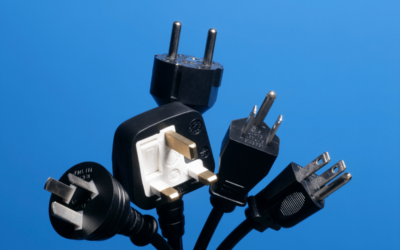One of the most crucial elements of starting a business is deciding how to charge customers. Even if you already have a subscription method for your organization (and are already familiar with the ways to charge subscribers), it’s good to revisit these concepts periodically.
1. Recurring Payments
The bread and butter of subscription billing is the recurring payment. The two essential parameters in charging subscribers on a recurring basis are:
- Billing period (or term) – The time between charges, such as monthly, quarterly, or yearly.
- Duration – The length of the subscription (typically a year). Subscriptions that do not have a term are called evergreen subscriptions. An evergreen subscription continues until the customer takes action to cancel it.
What to consider…
There’s an important difference between a subscription billing system and recurring payments service:
- Recurring payments service – Lets you charge the customer multiple times. However, it doesn’t know when to charge the customer; your system has to trigger the charges. One example is PayPal.
- Subscription billing system – Understands the billing period and duration and triggers the recurring charges itself. One example is, well, Kill Bill.
2. Usage-Based Payment
You’ve likely been charged this way already. For example, your cell phone carrier has plans that charge you based on how much data you use per month.
Usage-based billing that charges in arrears is straightforward. The customer pays for what they used.
What to Consider…
Charging for usage in advance can get complicated. You need to specify what happens if the customer goes over or under their defined usage amount. In the case of overage, does the customer have to pay? In the case of underage, does the unused portion roll over to the next billing period?
3. Fixed Charge
Fixed charges belong in the family of recurring payments, so don’t discount them! They can be quite useful in charging setup fees or one-off service fees.
4. Tiered Plan Payment
Tiering lets you organize the variants of a product. The more capabilities the user has (or the higher their perceived value), the higher-priced the tier. Think Gold, Silver, and Bronze.
What to consider…
In a tiered model, the customer can usually upgrade or downgrade their plan. Upgrades and downgrades require you to define business rules:
- Downgrades, like cancellations, can trigger refunds if they happen immediately, so downgrades often go into effect at the end of the billing term.
- Customers who upgrade want to immediately take advantage of the features in their new plan, so upgrades happen right away.
5. Add-On Charge
Add-ons are additional a-la-carte offerings you can add to the base plan of the subscription. Some add-ons may only be available at certain tiers (assuming you were using a tiered pricing model). Or, features available as an add-on for a tier might be an included feature in a higher tier plan.
What to consider…
The subscription billing system should have business logic to ensure that when the base plan for a subscription is changed (upgrade/downgrade), any associated add-ons are canceled if they are no longer available (or included) at the new tier. Similarly, if the customer cancels the base plan, the system must cancel the add-on, too.
6. Advance vs. Arrears
Billing can be done in advance so that you charge at the start of the term. Alternatively, it can be done in arrears, meaning that you charge at the end of the term.
Billing in advance has two huge practical advantages:
- You can deny the service until you get the money.
- Getting paid in advance leads to significant cash flow benefits for the business.
What to consider…
Your recurring payment model needs to define what happens when a customer cancels. Does the cancellation take place immediately upon request or at the end of the current billing term? In a system that charges in advance, an immediate cancellation can trigger a refund to the customer for their unused time. As a result, such systems are often set up to cancel at the end of the term.
7. Credits and Virtual Currencies
Credits and virtual currencies are very similar to usage-based billing in advance. The difference is that there is usually no billing term associated with the purchase.
In this model, the user buys a certain number of credits. The user consumes these credits while using the product. This is a well-known pricing model for online gaming.
Your organization can incentivize participation and engagement by giving away credits. For example, you can give credits to customers who invite a certain number of friends to join.
8. Trials and Discounts
Yes, we know that technically, trials are not a way to “charge” a customer. However, the trial period is ubiquitous in SaaS and online consumer products. You must take it into account when considering ways to charge subscribers.
Trials lower the barriers to entry and allow customers to test your product before buying it. Trial periods often span days, such as 7-day or 14-day trials.
As for discounts, you can use them to test price sensitivity or to drive a marketing promotion.
But Wait, There’s More…
Above are just eight ways to charge subscribers, but the possibilities abound when you consider that you can combine these techniques in complex ways.
Your subscription billing system should accommodate the different ways to charge subscribers without requiring massive staff-hours. In today’s market (or any market, really), your business needs to be ready to change direction at any time. The right subscription billing system can help you do that.
Want to learn more?
- Contact us to ask a question
- Read the Kill Bill overview
- Become a Kill Bill sponsor
- Join the Kill Bill Community
- Get started with Kill Bill



